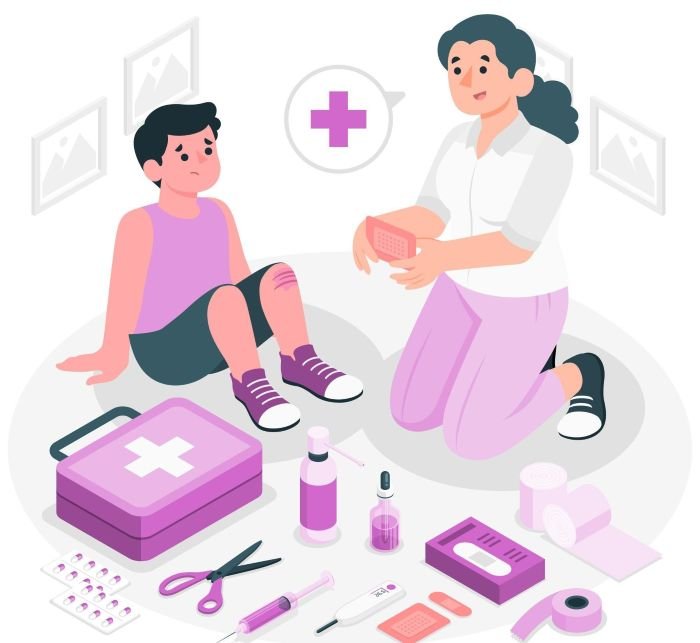In today’s unpredictable world, being prepared for emergencies isn’t just wise, it’s essential. Emergencies can happen anytime — from unexpected medical issues to fires, natural disasters or gas leaks. The good news is that your household can stay safe and respond quickly if you have a well-thought-out emergency response plan.
Whether you live in a flat in a bustling city or a small house in a tier 2 town, here is how to make an emergency plan that is practical, effective, and gives you peace of mind.
Steps to Create an Emergency Response Plan for Your House
Step 1: Identify Potential Risks in Your Home
Before crafting a plan, it’s crucial to identify the types of emergencies that could realistically occur in your household. These may include:
- Fire (from electrical faults or kitchen mishaps)
- Medical emergencies (accidents, asthma attacks, sudden illness)
- Natural disasters (earthquakes, floods, cyclones)
- Gas leaks or carbon monoxide exposure
- Power outages
- Security breaches or burglaries
Walk through your home with your family and pinpoint areas of concern. This early risk-mapping step sets the tone for your action plan.
Step 2: Prepare a Family Emergency Kit
Every household should have a ready-to-use emergency kit, stocked with essentials that support survival and basic care. Here’s what to include:
- First aid kit with medicines, antiseptics, and bandages
- Torch with extra batteries
- Copies of ID cards and essential documents (Aadhaar, insurance policies, etc.)
- Bottled water and ready-to-eat food for 2–3 days
- Power bank and backup phone charger
- Emergency cash (small denominations)
- Face masks and hand sanitisers
- Emergency contact list (printed and digital)
Keep the kit in a waterproof bag, easily accessible in a designated area.
Step 3: Fire Safety and Prevention
Fires account for thousands of domestic incidents in India every year. To minimise risk and respond effectively:
- Install smoke detectors in the kitchen and bedrooms.
- Keep a fire extinguisher handy, particularly near the kitchen or electric board.
- Never leave cooking unattended.
- Avoid overloading electrical sockets.
- Have a clear evacuation route mapped from each room.
- Practise “stop, drop, and roll” drills with children.
Step 4: Medical Emergencies and Response
Accidents and health emergencies can be chaotic, especially in homes with elderly members or small children. Here’s how to prepare:
- Display emergency numbers (ambulance, nearest hospital, poison control, family doctor) on the fridge or main wall.
- Assign one adult as the point-of-contact to call for help.
- Learn basic first aid and CPR—many organisations offer online tutorials.
- Store prescribed medications in labelled boxes for easy access.
- Keep a medical file with allergies, chronic conditions, and recent health records.
It’s also wise to check whether your local hospital or clinic offers emergency services 24×7.
Step 5: Create a Communication and Evacuation Plan
In case of evacuation, confusion can be deadly. Every family member should know:
- Two safe exits from the house.
- A central meeting point (nearby park, neighbour’s home, etc.).
- Which emergency contact to call if separated.
- How to lock down the house in a safe way.
Consider drawing a simple emergency map and sticking it in common areas like the kitchen or hallway.
Step 6: Get a Financial Safety Net for Your Home
While physical preparation is key, financial protection plays an equally important role. Emergencies can result in severe damage to your property and belongings, whether from fire, flood, or even theft. That’s where home insurance comes into play.
A comprehensive property insurance policy can help cover:
- Repair and reconstruction costs post-fire or natural calamity
- Damage to electrical appliances or furniture
- Theft or burglary losses
- Temporary relocation costs (in certain plans)
Thanks to the rise of digital platforms, buying home insurance is easier than ever. With options to compare, customise, and purchase home insurance online, you can secure your biggest investment without stepping out of your home.
Step 7: Digitise Important Documents
Having digital copies of essential documents ensures you’re not caught off guard if physical ones are damaged. This includes:
- ID proofs
- Medical reports
- Utility bills
- Vehicle and house insurance policies
- Bank details
Scan and store them securely in cloud storage (like Google Drive or Dropbox), with access shared among responsible family members.
Step 8: Don’t Forget Pets
If you have pets, include them in your emergency planning:
- Keep a bag with food, leash, water bowl, and any medication.
- Include contact numbers of nearby vets.
- Add them to your evacuation drills.
Step 9: Review and Practise Regularly
Having an emergency plan is not enough. Review and update it every 6 months:
- Check expiry dates on medicines and food in the emergency kit.
- Update contact details and emergency numbers.
- Conduct mock drills, especially if you’ve moved homes or changed appliances.
- Reassess insurance coverage and make sure it aligns with your property’s value and risks.
Regular drills ensure the plan remains second nature to everyone in the household.
Preparing for emergencies doesn’t require panic, it requires planning. A calm, organised response can make all the difference when seconds count. By covering everything from first aid to evacuation, communication, and financial recovery through home insurance, you’re giving your household the tools it needs to stay safe and bounce back.
With rising awareness, increasing natural calamities, and growing urbanisation, creating an emergency response plan isn’t optional, it’s essential. And if you haven’t already, consider protecting your home with house insurance that ensures you’re covered even when the unexpected occurs.
